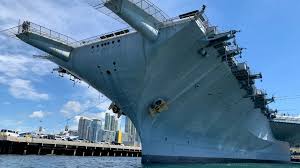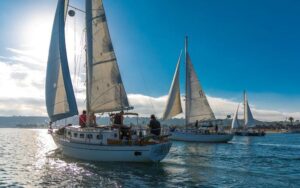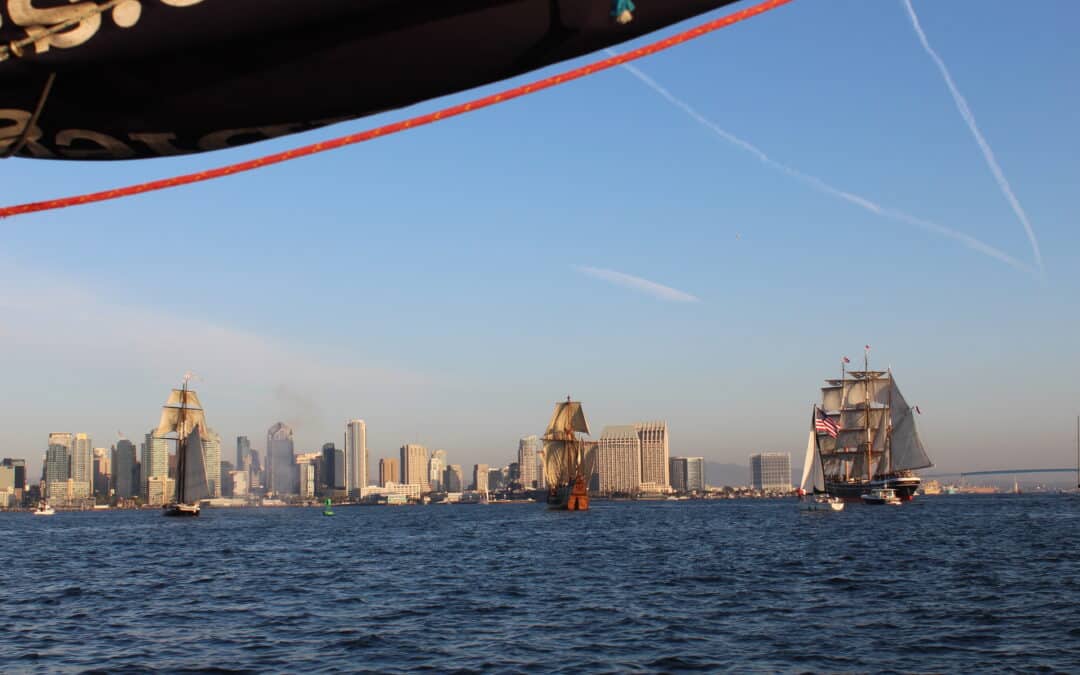San Diego Bay, a picturesque natural harbor on the southern coast of California, holds a fascinating history that spans centuries. From its indigenous roots to its role as a strategic naval base, the bay’s story is a testament to the dynamic interactions between cultures, commerce, and natural forces. In this blog, we’ll embark on a journey through time to uncover the captivating history that has shaped San Diego Bay into the vibrant and diverse region it is today.
- Indigenous Roots and Spanish Exploration: Long before the arrival of European explorers, San Diego Bay was inhabited by indigenous communities such as the Kumeyaay people. They thrived along the bay’s shores, utilizing its resources for sustenance and crafting intricate lifestyles that harmonized with the environment. In 1542, European explorer Juan Rodriguez Cabrillo, on behalf of the Spanish Crown, became the first recorded outsider to set foot in the area, marking the beginning of a new chapter in the bay’s history.
- Spanish Colonial Era: Throughout the 18th century, the Spanish established missions and presidios in California, including the nearby Mission San Diego de Alcalá. San Diego Bay’s strategic location offered a sheltered port for Spanish ships traveling along the coast, facilitating trade and communication between California and Mexico.
- American Influence and the Birth of San Diego: In 1848, following the Mexican-American War, San Diego officially became part of the United States. The bay played a crucial role during the Gold Rush era, serving as a gateway for prospectors traveling to California’s interior. The establishment of a military base, Fort Rosecrans, during the Civil War further solidified the bay’s significance.
- Military and Naval Legacy: San Diego Bay’s military importance continued to grow with the establishment of the Naval Training Center in 1916 and the construction of Naval Air Station North Island. During World War II, the bay became a vital hub for naval operations in the Pacific, playing a key role in the defense of the West Coast and serving as a base for aircraft carriers. It also holds the Midway.
- Economic Development and Urbanization: The mid-20th century saw a transformation in San Diego Bay’s landscape, as the city expanded and developed into a thriving metropolitan area. The construction of the San Diego-Coronado Bridge in 1969 facilitated easier access between the mainland an
- d the Coronado Peninsula, stimulating further economic growth and urbanization around the bay.

The USS Midway museum, a popular Memorial day destination in San Diego
- Environmental Conservation and Restoration: In recent decades, San Diego Bay has also been a focal point for environmental conservation efforts. Organizations and initiatives have worked to restore wetlands, preserve habitat for wildlife, and maintain the delicate balance between urban development and the natural environment.
Conclusion: The history of San Diego Bay is a tapestry woven with threads of indigenous heritage, Spanish exploration, military influence, economic development, and environmental stewardship. From its ancient roots to its modern-day role as a bustling maritime hub, San Diego Bay stands as a testament to the resilience of both nature and human communities. As we continue to navigate the future, it is vital to honor and appreciate the rich history that has shaped this iconic bay into a cherished symbol of San Diego’s identity.


Recent Comments